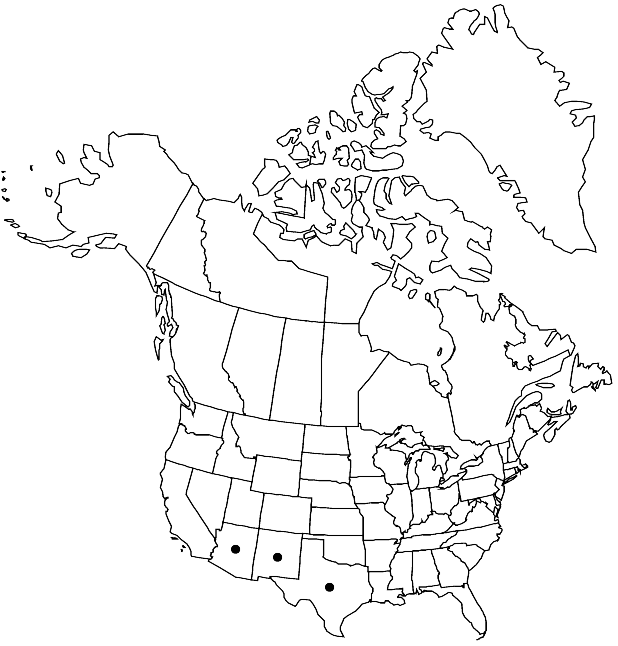Pennellia longifolia
Rhodora 62: 16. 1960.
Stems simple or few from base, 4–15 dm, pubescent proximally, trichomes simple and long-stalked, 2-rayed, mixed with smaller, dendritic ones. Basal leaves caducous; petiole to 3 cm; blade spatulate to oblanceolate, 1.8–3 cm × 2–4 mm, margins dentate, sinuate, incised, or runcinate, surfaces pubescent, trichomes stalked, forked and dendritic, mixed with fewer, simple ones. Cauline leaves (distal) sessile; blade linear, 3–9.2 cm × 0.8–5 mm, surfaces glabrous or glabrate. Racemes secund, 1.6–7.9dm in fruit. Fruiting pedicels slightly descending, recurved, 5–13 mm. Flowers (slightly zygomorphic, receptacle asymmetric); sepals purple or green, oblong, 4–9 × 1.5–4 mm, (adaxial largest); petals lavender to purple apically, spatulate, (4–) 5–7 (–12) × 1–3 mm, (adaxial largest); filaments 4–9 mm; anthers 1–1.2 (–2) mm. Fruits pendent, straight or nearly so, 5–10 cm × 1–1.2 mm, slightly latiseptate; valves glabrous; septum transparent; ovules 150–250 per ovary; style 0.5–1.2 mm. Seeds biseriate, plump, not winged, oblong, 0.7–1.3× 0.4–0.5 mm; seed-coat mucilaginous when wetted; cotyledons incumbent. 2n = 16.
Phenology: Flowering Jul–Oct.
Habitat: Mixed pine-oak forest, limestone hills, rocky outcrops and meadows, stream banks, shaded ravines
Elevation: 1400-3400 m
Distribution

Ariz., N.Mex., Tex., Mexico, Central America (Costa Rica), Central America (Guatemala)
Discussion
Selected References
None.
Lower Taxa
"elongated" is not a number."thick" is not a number."dm" is not declared as a valid unit of measurement for this property.